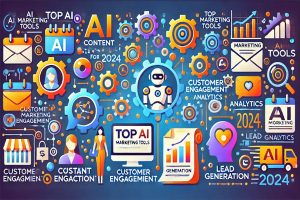
In the dynamic world of software development, testing plays a crucial role in ensuring the quality and reliability of applications. As technology continues to evolve, so does the field of software testing. New trends and practices emerge, offering innovative approaches to enhance the testing process and deliver superior software products. In this article, we will explore some of the notable software testing trends that are shaping the industry today.
Shift-Left Testing:
Traditionally, testing was performed towards the later stages of the software development life cycle (SDLC). However, the shift-left testing approach advocates for early involvement of testers in the development process. By integrating testing activities from the beginning, defects can be identified and rectified at an early stage, reducing costs and improving overall product quality. Shift-left testing involves techniques like static code analysis, code reviews, and early test automation.
Agile and DevOps Testing:
Agile methodologies have gained widespread adoption in software development, promoting iterative and collaborative practices. Software testing has adapted to this paradigm shift by embracing Agile testing methodologies. Agile testing focuses on continuous feedback, frequent testing cycles, and close collaboration between developers, testers, and stakeholders. Similarly, DevOps practices emphasize seamless collaboration and integration between development and operations teams. DevOps testing emphasizes continuous testing and delivery, leveraging automation and tools to accelerate the testing process.
Test Automation:
As software development cycles become shorter, the need for efficient and rapid testing increases. Test automation has emerged as a significant trend to address this demand. Automation frameworks, tools, and scripting languages enable testers to automate repetitive and time-consuming test scenarios. With automation, testers can execute tests quickly, increase test coverage, and improve accuracy. Continuous integration and continuous delivery (CI/CD) pipelines often rely heavily on automated tests to ensure rapid and reliable software releases.
Artificial Intelligence and Machine Learning in Testing:
Artificial intelligence (AI) and machine learning (ML) have made significant strides in recent years and have found applications in various industries, including software testing. AI/ML-powered testing tools and frameworks are now available, allowing testers to automate test case generation, identify patterns, and perform predictive analysis. These technologies can improve test coverage, detect anomalies, and assist in defect prediction, thereby enhancing the efficiency and effectiveness of the testing process.
Performance Engineering and Testing:
With the increasing complexity and scalability of software applications, performance testing has become a critical aspect of software development. Performance engineering focuses on identifying and mitigating performance bottlenecks throughout the SDLC. Testing tools and methodologies enable testers to simulate real-world scenarios, analyze system behavior under different loads, and optimize performance. Performance testing now goes beyond traditional load testing to include stress testing, endurance testing, and spike testing to ensure applications can handle varying user demands.
Security Testing:
In an era where cybersecurity threats are prevalent, security testing has gained paramount importance. Testers now employ advanced techniques to identify vulnerabilities and security loopholes in applications. Security testing includes activities like penetration testing, vulnerability scanning, and security code reviews. Testers work closely with developers to integrate security measures into the development process, ensuring robust protection against potential threats.
IoT and Mobile Testing:
The Internet of Things (IoT) and mobile applications have revolutionized how we interact with technology. As these domains continue to grow, specialized testing approaches have emerged. IoT testing involves validating the interoperability, reliability, and security of interconnected devices and systems. Mobile testing focuses on testing applications across different mobile platforms, screen sizes, and network conditions. Testers utilize emulators, simulators, and real devices to ensure seamless user experiences across various mobile devices.
In conclusion, the field of software testing is continuously evolving to keep pace with the changing landscape of software development. By embracing these trends, organizations can enhance their testing capabilities
Follow – https://techhipo.com for More Updates


